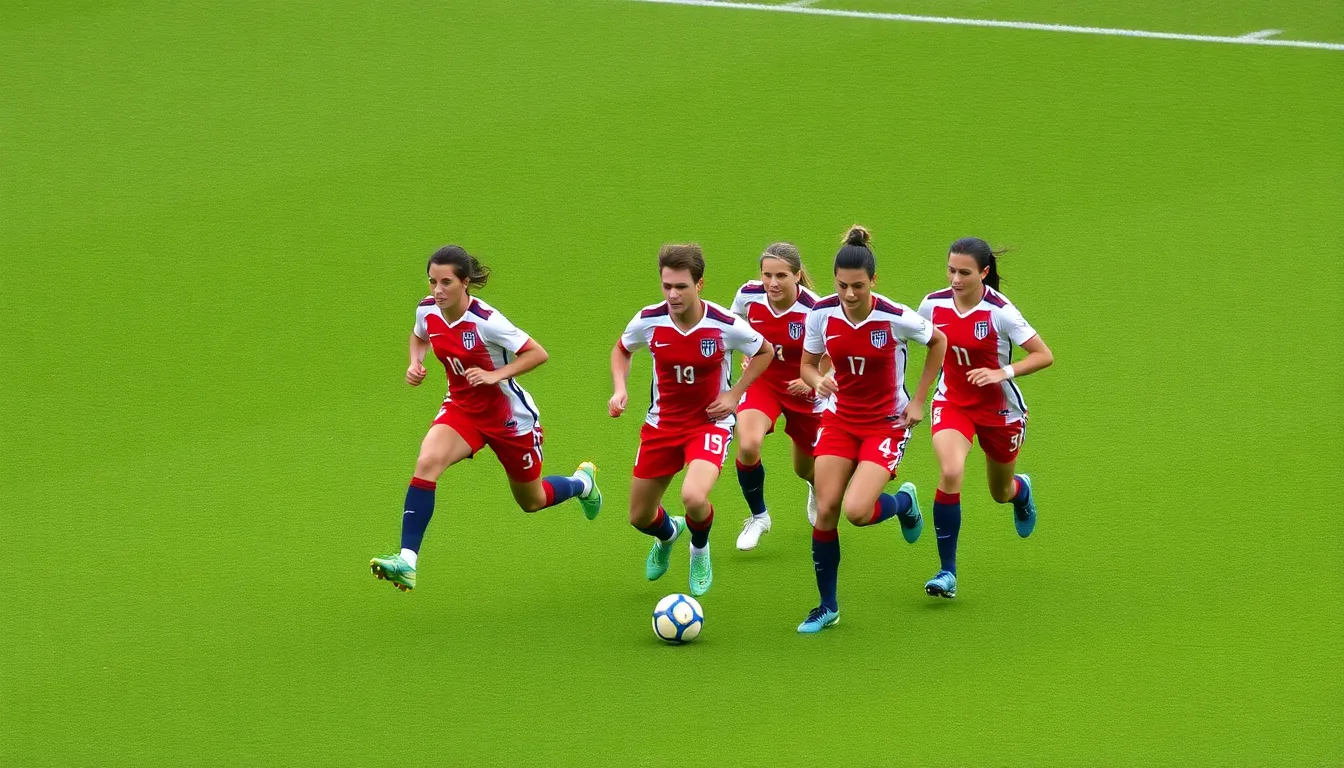In the thrilling world of FIFA, scoring goals isn’t just about luck; it’s an art form. Mastering attacking patterns can turn a novice player into a goal-scoring machine faster than you can say “hat trick.” Whether it’s zigzagging through defenders or executing the perfect through ball, understanding these strategies can elevate any player’s game.
Imagine dazzling your friends with your newfound skills, leaving them wondering if you’ve secretly been training with the pros. With the right attacking patterns, scoring becomes less of a gamble and more of a guaranteed thrill ride. So grab your controller and get ready to unlock the secrets of FIFA’s attacking maneuvers that’ll have your opponents shaking in their cleats.
Table of Contents
ToggleUnderstanding FIFA Attacking Patterns
FIFA attacking patterns refer to the strategies players utilize to create scoring opportunities. These patterns involve a series of coordinated movements and passes aimed at outmaneuvering the opposing defense.
Definition of Attacking Patterns
Attacking patterns entail set sequences of play designed to exploit defensive weaknesses. Players rely on these structures to navigate through tight spaces and break down organized defenses. Common formations include through balls, overlaps, and quick one-twos, each serving a specific purpose in the overall attack. Mastering these patterns enables players to anticipate teammates’ movements and make quick decisions under pressure. Effective attacking patterns increase the likelihood of finding an open player or creating a clear shot on goal.
Importance in Gameplay
Understanding attacking patterns offers a competitive advantage in matches. Players who grasp these concepts can enhance their offensive strategies, leading to more goals. Effective patterns promote teamwork by ensuring all players are aware of their roles within the attack. This awareness fosters better communication and coordination on the field. Additionally, well-executed patterns can disorient defenses, creating openings for shots on target. Teams that utilize these strategies effectively tend to outscore their opponents, reinforcing the need for players to invest time in mastering attacking movements.
Key Components of FIFA Attacking Patterns

Understanding the key components of FIFA attacking patterns enhances a player’s ability to create goal-scoring opportunities. Player movement and formation strategy stand out as critical elements in executing effective attacks.
Player Movement
Effective player movement is essential for creating space and opportunities. Players must stay dynamic, constantly adapting their runs to confuse defenders. Timing becomes crucial; initiating runs at the right moment can lead to clear chances on goal. Additionally, off-the-ball movements improve positioning, allowing teammates to exploit available spaces. Synchronization among players fosters better execution of attacking patterns, ensuring they navigate through defenses more smoothly. Ultimately, mastering these movements leads to more fluid transitions from midfield to attack.
Formation Strategy
Formation strategy significantly influences attacking patterns in FIFA. Different formations provide distinct advantages, helping teams exploit opponent weaknesses. For instance, a 4-3-3 formation emphasizes width, enabling wingers to stretch defenses and create crossing opportunities. Other formations, like 4-2-3-1, enable quick combinations through central play due to their compact structure. Adjusting formations based on opponent tactics increases adaptability and strengthens offensive efforts. Moreover, effective use of formations fosters communication among players, enhancing teamwork and maximizing scoring potential.
Common Attacking Patterns in FIFA
Understanding common attacking patterns in FIFA enhances a player’s ability to score. Mastering key techniques makes it easier to break down defenses.
Quick Passing Combinations
Quick passing combinations create opportunities by allowing players to move the ball swiftly and effectively. These sequences often involve one-touch passes that maintain momentum as they advance toward the goal. Utilizing player positioning to facilitate these passing patterns enables teammates to exploit gaps in defenders. Effective communication between players becomes essential, as anticipating a teammate’s next move leads to synchronized play. Players can use various formations to facilitate these combinations, maximizing scoring potential. Incorporating quick passing routines regularly helps players develop chemistry, ultimately increasing offensive efficiency.
Wing Play Strategies
Wing play strategies capitalize on the width of the pitch to stretch the opponent’s defense. Crossing from the wings creates scoring chances by delivering the ball into dangerous areas. Utilizing pacey wingers allows teams to push the ball wide, forcing defenders to commit. Players can then cut inside or deliver precise crosses to waiting strikers. Focusing on overlapping runs from full-backs can open additional passing lanes and confuse the defense. These strategies not only create space but can also draw defenders away from central areas, enhancing overall attacking effectiveness. Implementing wing play strategies contributes significantly to a team’s goal-scoring ability.
Analyzing FIFA Attacking Patterns
Understanding FIFA attacking patterns allows players to maximize their scoring opportunities. These strategies adapt well to various defensive setups.
Effectiveness Against Different Defenses
Attacking patterns show effectiveness against various defenses. For a tight defense, through balls can create space behind defenders. Quick one-twos work best against a high-pressing team, as they facilitate swift movement past opponents. Wing play often stretches weaker defenses, ensuring players exploit gaps in coverage. Using overlaps enhances this, with full-backs supporting wingers. Teams must recognize when to shift strategies based on the strength of the opponent’s defense to maintain offensive pressure.
Adaptation to Opponent’s Playstyle
Adapting to an opponent’s playstyle is crucial for success in FIFA. An aggressive team may require a more counter-attacking approach, exploiting their forward movements. Flexible formations enable players to adjust based on the game flow. Monitoring the opposing team’s weaknesses often reveals areas to target, adjusting attacking patterns accordingly. Effective communication among teammates supports quick adaptations during play. Mastering these adjustments can lead to more cohesive attacks and increased goal-scoring potential.
Mastering FIFA attacking patterns is vital for any player looking to elevate their game. By understanding and implementing these strategies players can create more scoring opportunities while enhancing teamwork and communication on the field. Adapting to different defensive setups and utilizing effective formations can make all the difference in a match.
Players who invest time in learning these patterns not only improve their individual skills but also contribute to their team’s overall success. Embracing these techniques will undoubtedly lead to more goals and a more enjoyable gaming experience. With practice and dedication anyone can transform their approach to scoring in FIFA.



